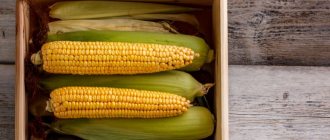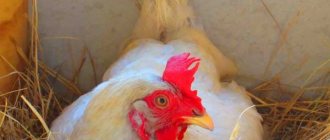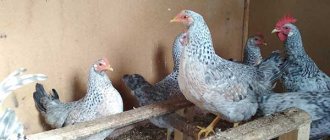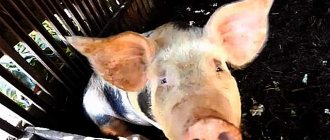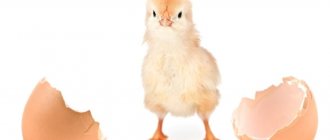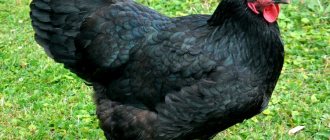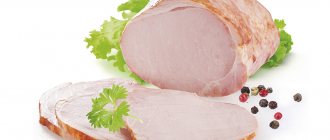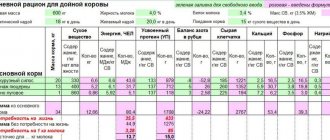1 840
no comments yet
0
Author:
Smirnov Alexey.
Reading time: 2 minutes
Mineral supplements that serve as a source of calcium, sodium and phosphorus must be introduced into the chickens' diet. They are necessary for the formation of bones, eggshells, are an important part of the internal organs of the bird and serve to increase egg production.
Mineral feeds must be provided to birds constantly, especially in winter, when birds do not use walking range or have limited access to it.
With a lack of minerals, chickens develop diseases such as rickets, osteoporosis, dystrophy and bone deformities, and the normal growth of the bird also slows down. In laying hens, the first thing that suffers is the quality of the eggshell: it becomes soft and easily damaged during the process of egg formation, so pathogenic microbes can get into it.
One such mineral supplement is chalk.
Mineral composition and beneficial properties
Feed chalk contains several main mineral elements:
- Calcium (37%) is the main component of the bait. It participates in the formation of bone, nervous and muscle tissue, regulates metabolic processes, promotes better absorption of iron, cleanses the body, and prevents the development of dystrophy in young animals. A sufficient amount of calcium in the diet ensures better taste of meat and eggs, prevents eggs from pecking in the winter, and promotes faster weight gain.
- Phosphorus (0.18%) takes part in the mineralization of the skeleton, preventing the development of dystrophy, and is involved in many metabolic processes in the body.
- Potassium (0.5%) primarily regulates the metabolism of calcium, phosphorus and vitamin D3. In addition, it participates in the synthesis of amino acids and lipids, is responsible for the quality of feathers, improves appetite and helps increase egg production.
- Sodium (0.3%) along with potassium is necessary for the formation of eggshells.
Sufficient presence of chalk in the diet:
- increases egg production by 20%;
- increases broiler weight gain;
- promotes rapid growth of chickens;
- promotes rapid restoration of plumage during the molting period;
- prevents bone diseases.
Mineral premixes
Some companies produce ready-made complementary foods consisting of various vitamins and minerals. The use of such additives will be reasonable in the case when they contain various elements, and not just phosphorus and calcium.
Premixes are convenient to add to feed, which has a weak structure. For example, if you only provide one type of grain or kitchen scraps. In addition, premixes increase the productivity of chickens, but provided that other living conditions for the birds meet the standards.
To bring calcium back to normal, it is necessary to introduce separate supplements that contain this substance in excess - shell, chalk, limestone.
Here are examples of the most popular premixes:
- Country courtyard. Rich in minerals and vitamins.
- Ryabushka. Contains such components as: iron, copper, manganese, iodine.
- Agroservice. Proteins, vitamins, calcium, phosphorus, copper.
- Broiler economy Vitamins, copper, zinc, calcium, selenium.
- Sun. Recommended for enriching the diet of young animals. Vitamins, microelements, calcium, cobalt, iodine.
Such complementary foods are suitable for laying hens, boiler hens and young animals. It is worth introducing such products into the daily menu only when you feed chickens with home-made mixtures.
Don't forget about adding gravel. It is sometimes classified as a mineral supplement, but this classification is erroneous. The gravel is like teeth for chickens.
As soon as the pebbles enter the stomach, they begin to settle there and help the grain to grind.
When gravel does not enter the bird’s body, metabolic processes are disrupted, which can lead to the formation of pathologies. Make sure to purchase clean, high-quality gravel that is free of pebbles and sand.
If you raise chickens for meat or raise laying hens for a large number of good quality eggs, then you should carefully monitor the amount of beneficial minerals in your birds' daily diet.
Using practical examples, this can be achieved by introducing one premix or a pair of complementary foods of mineral origin. In most cases, shells, feed-grade chalk, and phosphates are purchased. If your chicken coop does not have a large number of flocks, then you can easily get by using eggshells or ash. We wish your farm prosperity.
Source: mojaferma.ru
Which chalk should you choose?
It is best to use a special feed additive. It is purified from impurities, including toxic ones, and contains up to 75% beneficial substances. Ready-made fertilizer is sold in stores in packages of 2 and 5 kg. It can be added to mixtures with wet food. Other types of feeding you can give:
- limestone flour, rich in calcium and magnesium;
- tricalcium phosphate, which contains, in addition to calcium, phosphorus and sodium (all components in an easily digestible form);
- shell rock, which in addition to calcium contains iodine and magnesium.
Farmers sometimes resort to using limestone (it contains 35% of useful substances) or construction chalk. The latter substance is undesirable, but acceptable, and it must be pre-prepared. Under no circumstances should you give quicklime! This can cause burns to the mucous membrane!
Wood ash
Contains a complex of minerals, in particular: calcium 33%, phosphorus 2%, sodium 9%, potassium 7%, magnesium 7%, manganese 0.47%, iron 0.8%. They feed it at the rate of 10 grams per head or in a separate container in the form of coal ad libitum.
If you give your chickens baths to bathe in ash, you won’t need to add any additional ash to the feed. This achieves two goals.
This is lake silt, which contains protein (up to 6%), calcium (1.2%), as well as other trace elements. Used as a complex additive at the rate of 20 grams per head for chickens and 5-15% of the diet for chickens.
How much do you need?
To ensure proper functioning of the body, an adult must consume at least 3.5 g of chalk per day.
Adult laying hens
Before laying begins, the hen begins to accumulate calcium. During this period, her body absorbs up to 70% of the chalk eaten. She will use these reserves in the future. When the shell is formed, the chicken receives only part of the calcium from food (about 1.3 g), and the rest (0.7 g) from internal reserves.
The process of forming an egg takes about 20 hours, and the shell takes another 6 hours. During this period, calcium consumption reaches 0.3 g of calcium per hour, which, of course, should be constantly restored.
Chickens and young animals
Children need chalk feeding for the prevention of diseases, healthy growth and development of the body. The supplement begins on day 10, and after a certain period the amount is increased:
- from 10 to 20 days – 13 g per day per 10 heads;
- from 21 to 30 - 18 g;
- from 31 to 40 – 23 g;
- from 41 to 50 – 28 g;
- from 51 to 60 – 33 g;
- from 61 to 90 – 38 g;
- from 91 days to 4 months – 43 g.
Starting from the age of four months, young animals should be given 50 g of chalk per day per 10 animals.
You can read about how to properly give salt to chickens here.
What can a calcium-poor diet lead to?
If there is a lack of the substance in question, chickens are upset by eggs with thin, soft shells. Often the shell is completely absent, and the white and yolk are held in place by the shell membrane.
Such anomalies often make themselves felt in pullets. In any case, this is a sign of Ca deficiency. Mineral deficiency also manifests itself:
- Cannibalism;
- digestive system failures;
- problematic metabolism;
- weakness of bones and joints;
- high incidence rate;
- chick waste;
- low level of productivity.
How to give?
Chalk is not given as a separate component in dry form: a chicken will not be able to swallow such food. It definitely needs to be mixed with something. Traditionally, the mineral is added to chickens' wet mashes. It is necessary to ensure that the feeding is small enough and does not form lumps, since this will make it difficult to swallow and, as a result, the chicken may not receive the daily requirement of minerals. Some farmers resort to using special bedding, 75% chalk. Chickens swarm in it, peck and thus get the required amount of substances. This bedding is also beneficial because it perfectly absorbs moisture and prevents the development of pathogenic microflora.
Why is soil deoxidation necessary?
Each type of plant is suitable for a certain acidity, characterized by a pH value. The reaction of the soil solution can be as follows:
| Very sour | 3,8-4,0 |
| Strongly acidic | 4,1-4,5 |
| Sour | 4,6-5,0 |
| Slightly acidic | 5,1-5,5 |
| Neutral | 5,6-6,9 |
| Alkaline | 7-8 |
| Highly alkaline | 8-9 |
Most garden crops prefer soil with a neutral or slightly acidic reaction. They react negatively to deviations from the norm. Signs of nitrogen and phosphorus starvation appear:
- inhibition of development;
- yellowing and falling leaves;
- deterioration or stopping of flowering;
- fruit chopping;
- reduction in the quantity and quality of the crop.
High soil acidity indicates an excess of hydrogen ions. When applying fertilizers, a chemical reaction occurs, as a result of which the substances become inaccessible to plants. Such soils contain a lot of aluminum and manganese, which disrupt the normal course of metabolic processes.
When deoxidized, the composition of the soil is normalized, its quality improves, beneficial bacteria are activated, and macroelements remain in an easily digestible form. The frequency of the procedure depends on the type of soil:
- peat - once every 3 years;
- sandy – after 5 years;
- loamy - once every 7 years.
At the same time, the preferences of the crops being grown are taken into account - deoxidizers are applied throughout the area or zonally.
Features of using construction chalk
As noted above, the use of construction chalk for feeding chickens is an extreme and undesirable measure. But if there are no other options, then it should be used, otherwise the bird will begin to have health problems.
First of all, you should remember that construction chalk should never be given in its pure form: it contains many harmful impurities (gypsum, marble) that can affect the condition of the bird.
You may also be interested in the article: “When and why to give yeast to laying hens and broilers?”
In order for building material to be given to chickens as food, it should be prepared:
- Mix in equal proportions with water.
- Let it sit.
- Drain the water.
- Dry the sediment well.
- Select large solids that the chicken will not be able to swallow.
This material is more suitable for adding to the diet of chickens.
Why do you need gravel?
A few words about gravel. It is often put on a par with mineral supplements, although this is incorrect. The function of gravel is to serve as teeth for the bird. Once in the gizzard, the gravel settles there and contributes to the grinding of the grain.
Therefore, good gravel should be clean, free of dirt and fine sand, and not dissolve in water or acid. The gravel size for chickens should be 4-6 mm, for smaller chickens - 2-3 mm.
Gravel can be given ad libitum in bulk on the bedding, in a separate container, or introduced into the feed once a week in the amount of 10-15 grams per head. If the bird is kept free-range, it is not necessary to provide gravel.
Different fractions of gravel are given to the bird depending on size and age.
Conclusions:
- It is necessary to give chalk to chickens. It is a source of calcium and several other minerals involved in the formation of most body tissues. Calcium is especially important for the prevention of bone diseases and the formation of hard shells in eggs.
- It is best to use a special feed additive for complementary feeding: it is well purified and rich in nutrients.
- You can find several varieties of bait in stores. However, if it is not possible to purchase a special composition, you can resort to improvised means, for example, construction chalk. However, in this case it must be specially prepared.
- Chickens should receive chalk from 7-10 days until the end of their lives, and the dosage will be different at each age. On average, a healthy adult chicken should receive at least 3.5 g of chalk per day, and for laying hens this daily dose of chalk should be increased to 4 g.
Why do eggs have soft shells?
As mentioned above, calcium deficiency leads to a wide variety of masonry problems. One of the common pathologies resulting from calcium deficiency is the appearance of soft-shelled eggs.
Look at the photo: overnight the soft-shelled egg dried out and began to look very original!
On average, a chicken spends up to 2 grams of calcium to produce one egg, of which 60% is mineral compounds from food, and 40% is an element produced by the body. Therefore, even one day without using calcium supplements can result in soft-shelled eggs. But it is important to understand that it is not only the absence or deficiency of calcium that causes this problem.
There are other factors that influence this. Laying hens produce soft-shelled eggs in the following situations:
